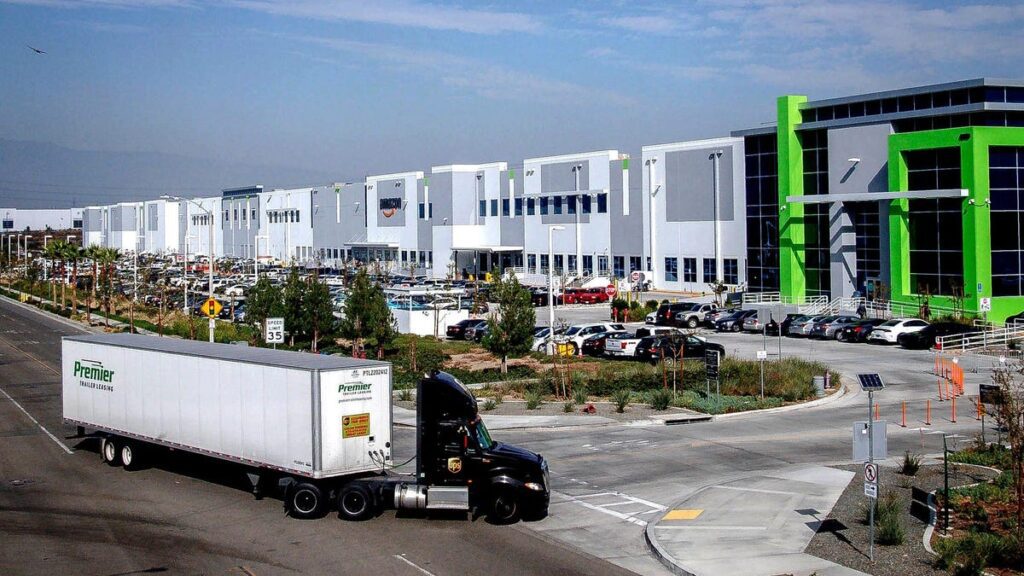Truck Pollution Is Killing This Southern California Region

An Amazon Warehouse in Eastvale, CaliforniaImage: Watchara Phomicinda (AP)
There’s a part of America located on the West Coast that’s essentially one giant storage area, filled with millions of square feet of things sitting and waiting to be distributed to the rest of the country. I’m referring to Southern California’s Inland Empire. While this region may be booming to some, that comes at a high price; the L.A. Times reports on the environmental impact of these mammoth buildings and the millions of trucks that traverse the region’s roads to and from the ports.
Living here — and I face this as both a native and resident — you’re faced with a harsh reality: Breathing in the worst smog in the nation. Data from the American Lung Association shows it. And on any given day, when the Santa Ana winds haven’t come and blown it all away, you can literally see the brown haze of pollution hanging over one of the many local valleys.
Most of the pollution is big rig exhaust. At any given time, semi trucks are traversing local streets and freeways making their way to and from the ports of Los Angeles and Long Beach. And it’s bad. Using a mapping tool called Warehouse City that was developed to track the progress of the region’s warehouses, it shows that there are 4,000 warehouses in the region with a total footprint of 1.5 billion sq.-ft. Running between these warehouses are half a million daily big rig trips, choking the air with pollution. What’s worse, 300 of these warehouses are within 1,000 feet of nearly 140 schools.
Getting down to specific cities shows that some areas fare better or worse than others. Ontario, California — which also happens to be my hometown — has the most warehouses of any city in the area at 600. Along with those 600 warehouses come over 95,000 daily big rig trips. To put that in perspective, that’s more trucks than you’d see on the 710 freeway, with its 45,000 daily truck trips. The 710 is a direct route to and from the port of Long Beach.
In recent years legislation has been proposed to curb the development of warehouses and stop the environmental impacts caused by their development and trucking. California Assembly Majority Leader Eloise Gómez Reyes proposed legislation in 2022 that would have created a buffer zone of 1,000 feet between warehouses and places like schools and daycares. But anything challenging their development is met by opposition from developers and local leaders. One local developer, Howard Industrial Partners, who developed over nine million square feet locally, argues that warehouses increase the quality of life.
“Development is creating an employment base and is an economic driver,” said Tim Howard, a founding partner of Howard Industrial Partners. He said warehouse projects have “transformed cities” like Fontana, providing employment opportunities and raising the quality of life.”
G/O Media may get a commission
But the employment he’s referring to has median wages for warehouse workers of just over $18 per hour and $24.93 per hour for truck drivers — not enough for California’s high cost of living. And the warehouses, their footprints and subsequent trucking have transformed cities in the worst way.
Unless something more is done, the region will continue to be bogged down by warehouses and choking exhaust. And as one local engineer turned advocate said, it’s not prepared for itL “We have the worst air quality. We have gridlock. We have streets and communities that were never built for global logistics. We’re basically building, on top of failed infrastructure, a global network.” Head over to the L.A. Times to read more.




